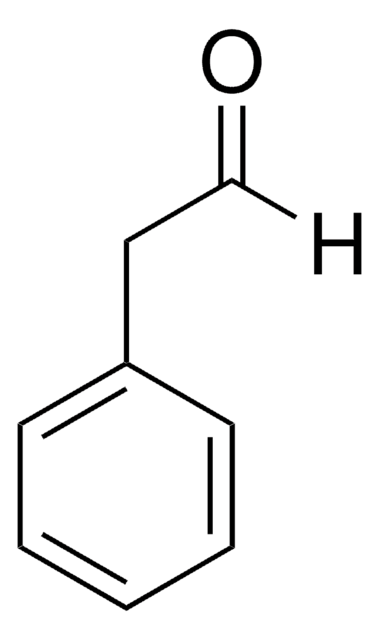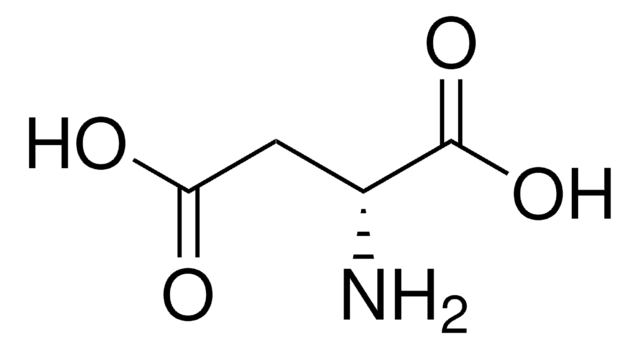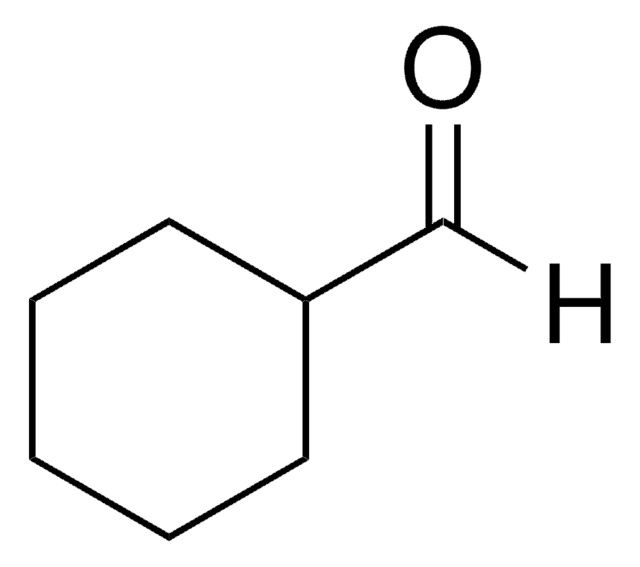241369
2-Phenylpropionaldehyde
98%
Synonym(s):
2-Phenylpropanal, Hydratropaldehyde
Sign Into View Organizational & Contract Pricing
All Photos(2)
About This Item
Linear Formula:
CH3CH(C6H5)CHO
CAS Number:
Molecular Weight:
134.18
Beilstein:
1905601
EC Number:
MDL number:
UNSPSC Code:
12352100
PubChem Substance ID:
NACRES:
NA.22
Recommended Products
Assay
98%
form
liquid
refractive index
n20/D 1.517 (lit.)
bp
92-94 °C/12 mmHg (lit.)
density
1.002 g/mL at 25 °C (lit.)
functional group
aldehyde
storage temp.
2-8°C
SMILES string
[H]C(=O)C(C)c1ccccc1
InChI
1S/C9H10O/c1-8(7-10)9-5-3-2-4-6-9/h2-8H,1H3
InChI key
IQVAERDLDAZARL-UHFFFAOYSA-N
Looking for similar products? Visit Product Comparison Guide
Application
2-Phenylpropionaldehyde (hydratropaldehyde) was used as a substrate to study the deformylation activity of reconstituted myoglobin, rMB(1).
Storage Class Code
10 - Combustible liquids
WGK
WGK 1
Flash Point(F)
174.2 °F
Flash Point(C)
79 °C
Personal Protective Equipment
dust mask type N95 (US), Eyeshields, Gloves
Choose from one of the most recent versions:
Already Own This Product?
Find documentation for the products that you have recently purchased in the Document Library.
Customers Also Viewed
Takashi Matsuo et al.
Journal of the American Chemical Society, 124(38), 11234-11235 (2002-09-19)
We successfully converted myoglobin, an oxygen-storage hemoprotein, into an oxygen-activating hemoprotein like cytochrome P450s by replacing the native hemin with the artificially created flavohemin. The reconstituted myoglobin, rMb(1), was chacterized by ESI-TOF-mass, UV-vis, and fluorescence spectra. The 1H NMR spectrum
M Popović et al.
Chemical research in toxicology, 17(12), 1568-1576 (2004-12-21)
Felbamate (2-phenyl-1,3-propanediol dicarbamate, FBM) can cause aplastic anemia and hepatotoxicity. The mechanism of FBM-induced toxicities is unknown; however, it has been proposed that 2-phenylpropenal, a reactive metabolite of FBM, is responsible. The pathway leading to this metabolite involves hydrolysis of
C M Dieckhaus et al.
Chemical research in toxicology, 14(5), 511-516 (2001-05-23)
Felbamate has proven to be an effective therapy for treating refractory epilepsy. However, felbamate therapy has been limited due to the associated reports of hepatotoxicity and aplastic anemia. Previous research from our laboratory has proposed 2-phenylpropenal as the reactive metabolite
Shane G Roller et al.
Chemical research in toxicology, 15(6), 815-824 (2002-06-18)
Felbamate is an anti-epileptic drug associated with hepatotoxicity and aplastic anemia. These toxicities are believed to be mediated by the formation of the reactive species 2-phenylpropenal. 4-Hydroxy-5-phenyl-[1,3]oxazinan-2-one is a metabolic precursor for 2-phenylpropenal. 4-Hydroxy-5-phenyl-[1,3]oxazinan-2-one exists in equilibrium with 3-oxo-2-phenylpropyl carbamate
Robert J Parker et al.
Chemical research in toxicology, 18(12), 1842-1848 (2005-12-20)
Evidence has been presented suggesting that a reactive metabolite, 2-phenylpropenal (ATPAL), may be responsible for the toxicities observed during therapy with the antiepileptic drug felbamate (FBM). Formation of ATPAL from its unstable immediate precursor, 3-carbamoyl-2-phenylpropionaldedhyde (CBMA) requires the loss of
Our team of scientists has experience in all areas of research including Life Science, Material Science, Chemical Synthesis, Chromatography, Analytical and many others.
Contact Technical Service










